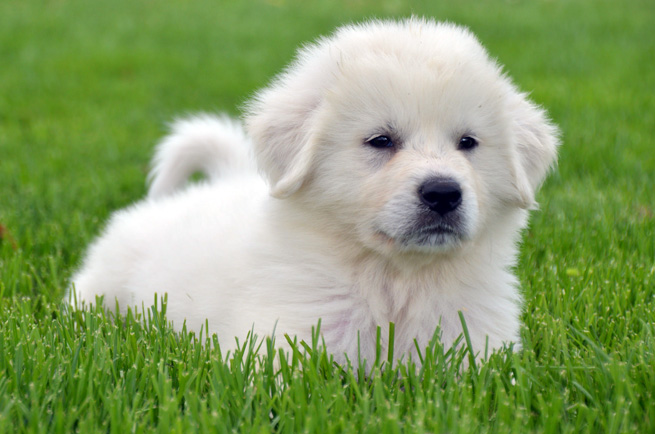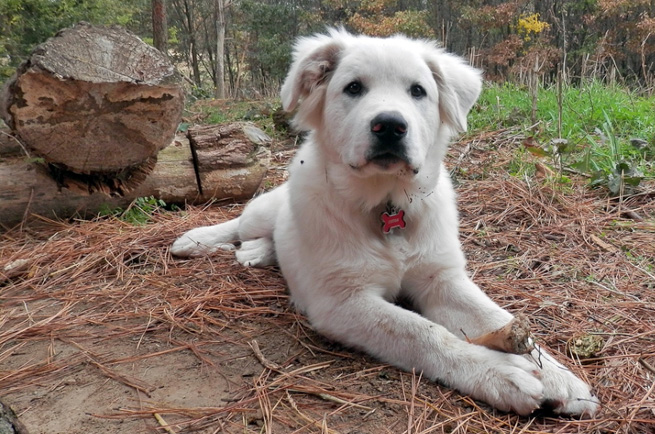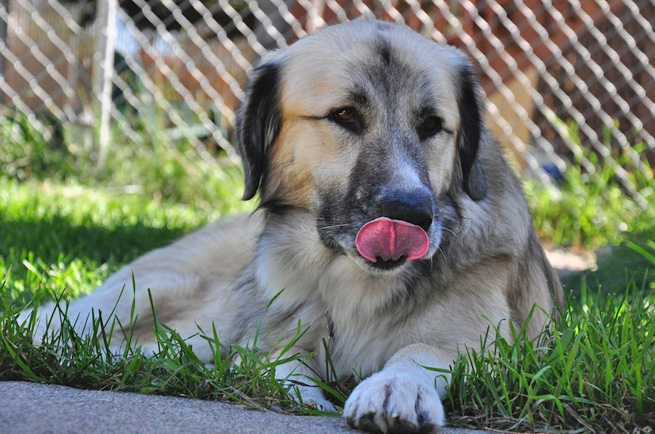Great Pyrenean Mountain Dog – Great Pyrenees
They look as majestic as the mountains that give them their name–massive, beautiful and with tremendous elegance. With their glorious white coats and regal presence, Pyrs are a distinctive breed. They look immensely strong and yet are well-balanced with unhurried, steady and smooth movement which is driven by powerful hindquarters.
Other Names
Great Pyrenees, Chien de Montagne des Pyrenees, Pyr
Country of Origin
France
Colour
White
Size
Large
Height / Weight
Bitches normally stand between 65 to 72cms tall at the withers and dogs 70 to 80cms. Bitches usually weigh 40kgs plus and dogs between 50 to 60kgs.
Health
Common ailments include: Blue Eye, Bones (Developmental) - Hip dysplasia, Bones (Developmental) - Patellar luxation, Brittle Bones, Deafness, Mouth - Cleft palate
Life Span
11-15 years
Intelligence
These are highly intelligent but beware, they do have a stubborn streak! They need lots of loving and consistent training from a young age.
Exercise
Low
Suitability (Children)
Low
Feeding
As puppies Great Pyrenean Mountain Dogs can be costly to feed. You must follow the breeder's recommended diet sheet to ensure healthy growth of their bones. As they grow into adults they lose their appetites and so the cost will reduce.
Feeding Cost
$20+ P/w
Other Cost
Excercise
Pups should be exercised gradually to avoid excess strain on their growing bones and tender tissues. Even in adulthood, build up exercise gradually. Despite their hefty size, Great Pyrenees don't need huge amounts of exercise.
Hair Shed
Heavy
Ailments
Common ailments include: Blue Eye, Bones (Developmental) - Hip dysplasia, Bones (Developmental) - Patellar luxation, Brittle Bones, Deafness, Mouth - Cleft palate
Grooming
Brush or comb thoroughly once or even twice a day to remove loose hairs. This becomes even more important during the moulting times. Failure to do this will result in the coat matting and the dog's coat looking dull and unhealthy. They do require regular bathing and this is no easy task!
Grooming Frequency
Daily
Trimming
Occassional
Originating from the Pyrenees Mountains, this breed's exact history is unknown but they have been guarding the flocks in France for a thousand years. Fossils predating the Bronze Age (1800-1000BC) of the breed type have been uncovered. Before the French Revolution, the breed could be found guarding the large chateaux in southern France. Exactly what breeds contributed to their make-up are not known but the Kuvasz of Hungary, the Maremma Sheepdog of Italy and Anatolian Sheepdog of Turkey are all likely candidates. Dauphin Louis X1V named the breed the Royal Dog of France, though the peasants still used them to watch their flocks. These dogs were also used to smuggle contraband over the border between France and Spain as their sure-footedness enabled them to use passes that were impossible for us human folk! Early in the 20th century, however, the breed was scarce and Bernard Senac-Langrange and M Dretzen can both be credited for saving the breed. To this day, the breed works in France guarding their flocks of sheep and herds of cattle from bears, wolves and other stock thieves.
comments powered by Disqus







